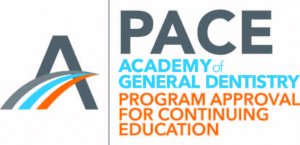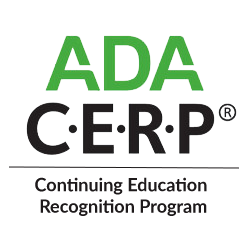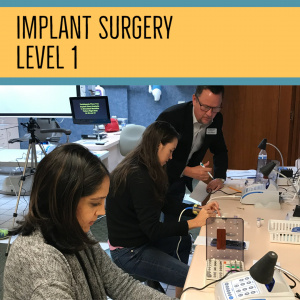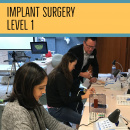Implant Surgery - Level 1
Product Details
Integrating implant surgery into your practice is not difficult or threatening, and it will certainly be a positive and profitable change in your professional life. You undoubtedly already have implant prosthodontics in your practice, and this course will update and enhance your prosthodontic skills. Primarily, the course emphasizes surgically placing small-diameter implants (1.8 to 2.9 mm in diameter) in edentulous and partially edentulous patients and placing conventional-diameter implants (3mm and larger in diameter) in healthy patients who do not require bone grafting.
The course includes:
- Differential diagnosis and treatment planning for small-diameter and conventional-diameter implants
- Anatomy essential for implant placement
- Equipping your office and educating your staff for implant placement
- A comparison of implant companies
- Techniques for placing implants
- Related prosthodontic materials and techniques
Both implant surgery and prosthodontics can be enjoyable parts of any dental practice after adequate education and motivation. This course provides enough information and experience for you to place and restore implants in a non-complicated patient.
Helpful Tip: If you are considering 2 or more PCC hands-on classes, we strongly encourage you to check out our Christensen Continuum Program. You can save over 30% off your course tuition by joining the Continuum Program and receive additional free benefits.
Course Schedule
In Utah: Day One
- Course 8:00 AM to 4:00 PM
- Lunch at noon (1/2 hour)
In Utah: Day Two
- Course 7:30am - 1:00pm
- Brunch & Discussion at 9:30 (1/2 hour)
Behavioral Objectives
At the completion of this course participants should be able to:
- Describe the overall need for root-form dental implants
- Discuss patient health characteristics necessary for uncomplicated placement of small-diameter implants(SDI)
- Discuss the types of clinical indications that are best for SDI
- Discuss oral anatomy related to implant placement
- Describe the various types of bone in the oral cavity
- Describe needed radiographs for implants
- Compare clinical techniques for conventional-diameter implants with SDIs
- Describe the quantity of bone needed for conventional root-form implants (> 3mm in diameter)
- List and compare implant companies
- Describe the clinical procedure for placement of conventional-diameter implants
- Describe the clinical procedure for placement of SDIs
- Discuss use of SDIs for complete and partial dentures, fixed-partial dentures and as single tooth abutments
Please see our course cancellation policy









